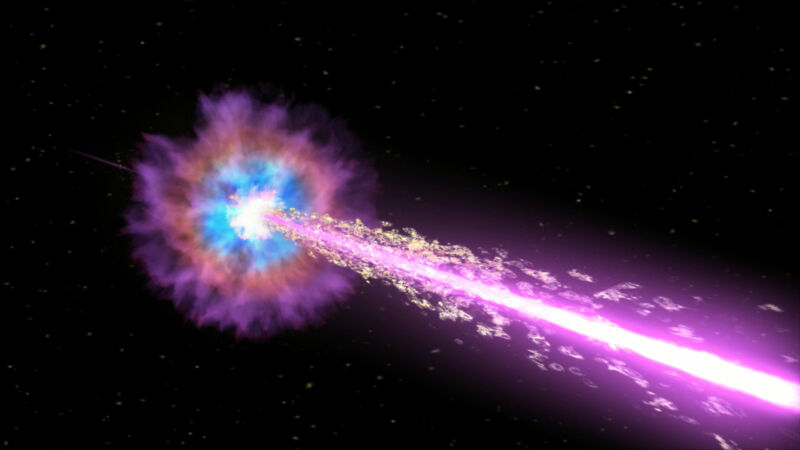
Enlarge / Artist's conception of a gamma-ray burst. (credit: NASA)
Supernovae are some of the most energetic events in the Universe. And a subset of those involves gamma-ray bursts, where a lot of the energy released comes from extremely high-energy photons. We think we know why that happens in general terms—the black hole left behind the explosion expels jets of material at nearly the speed of light. But the details of how and where these jets produce photons are not at all close to being fully worked out.
Unfortunately, these events happen very quickly and very far away, so it's not easy to get detailed observations of them. However, a recent gamma-ray burst that's been called the BOAT (brightest of all time) may be providing us with new information on the events within a few days of a supernova's explosion. A new paper describes data from a telescope that happened to be both pointing in the right direction and sensitive to the extremely high-energy radiation produced by the event.
I need a shower
The "telescope" mentioned is the Large High Altitude Air Shower Observatory (LHAASO). Based nearly three miles (4,400 meters) above sea level, the observatory is a complex of instruments that aren't a telescope in the traditional sense. Instead, they're meant to capture air showers—the complex cascade of debris and photons that are produced when high-energy particles from outer space slam into the atmosphere.
Read 11 remaining paragraphs | Comments
